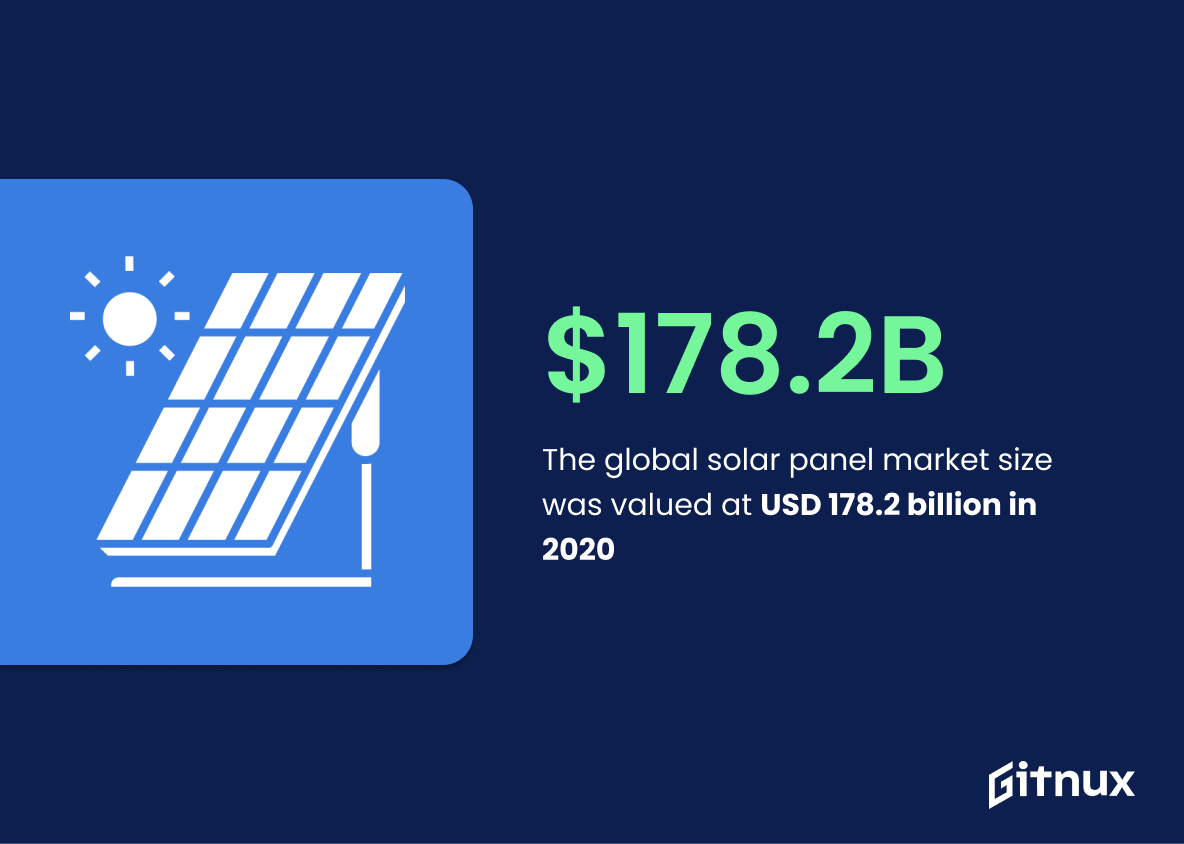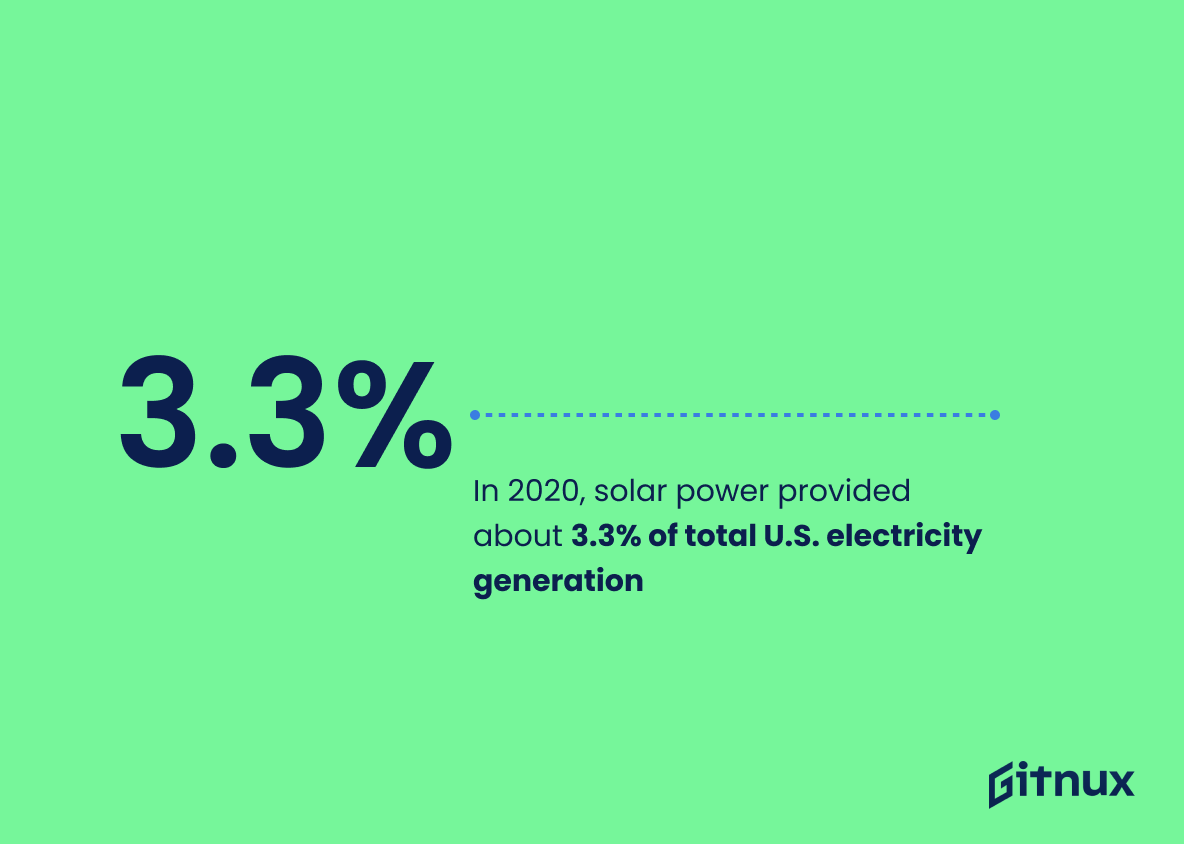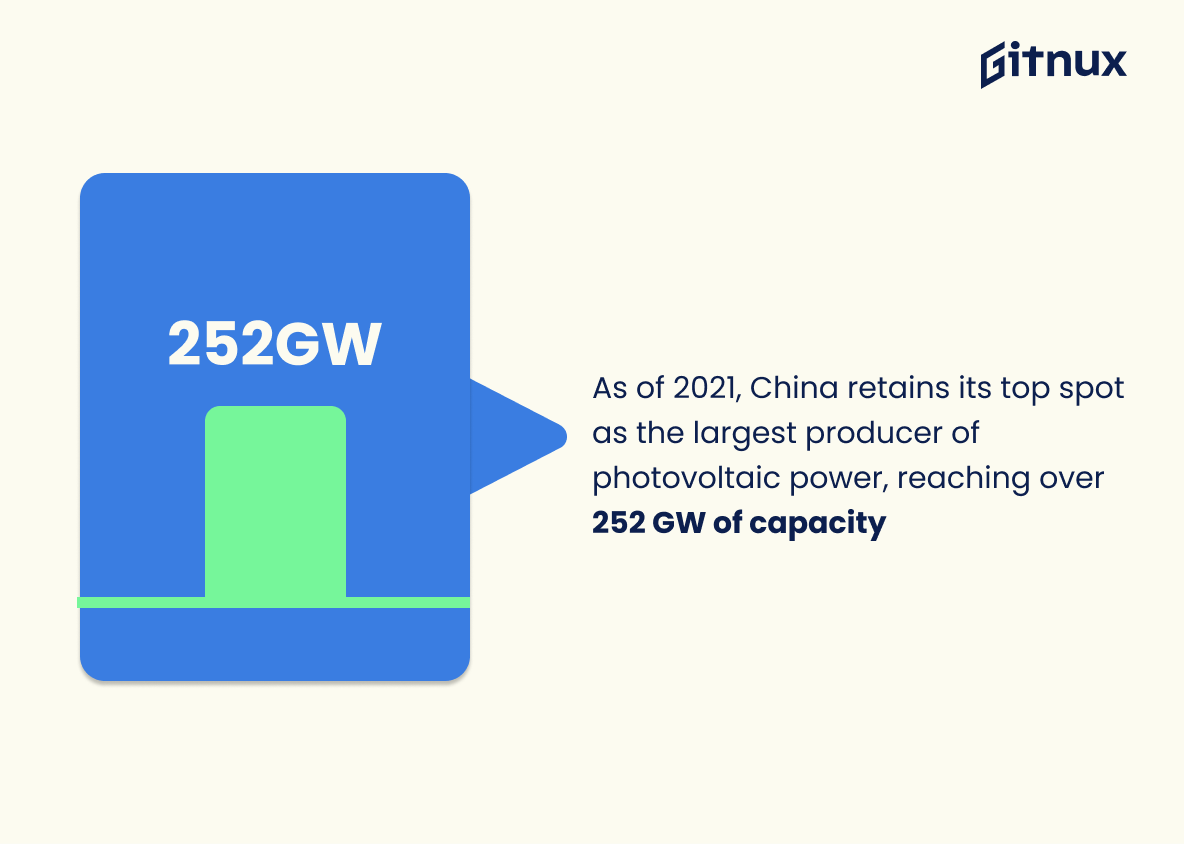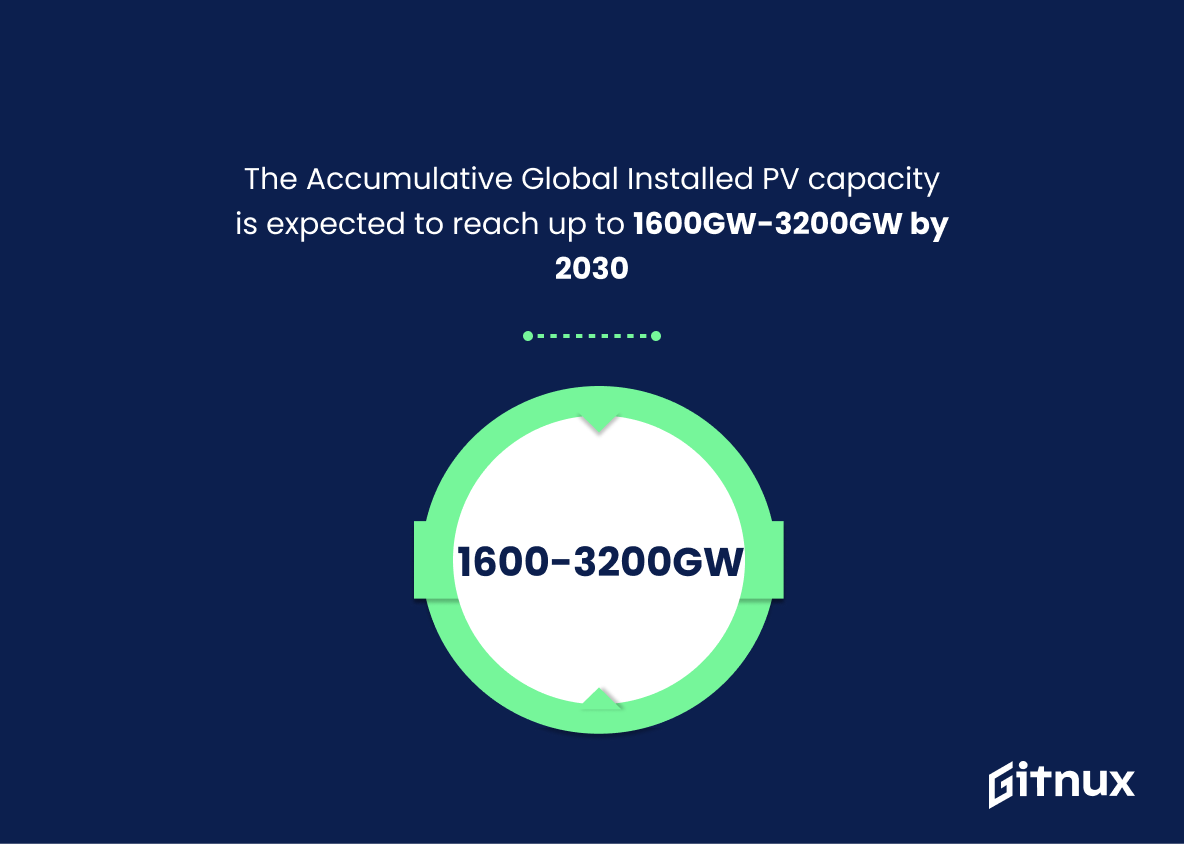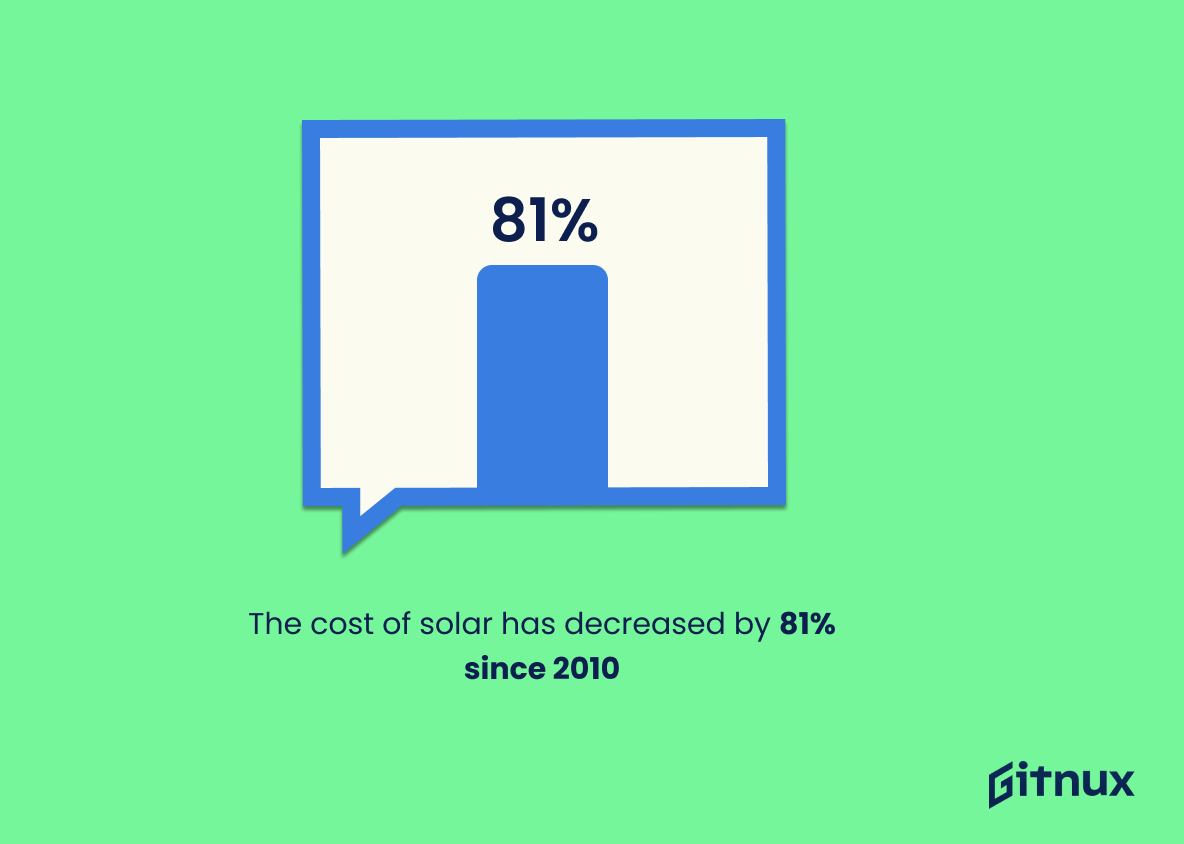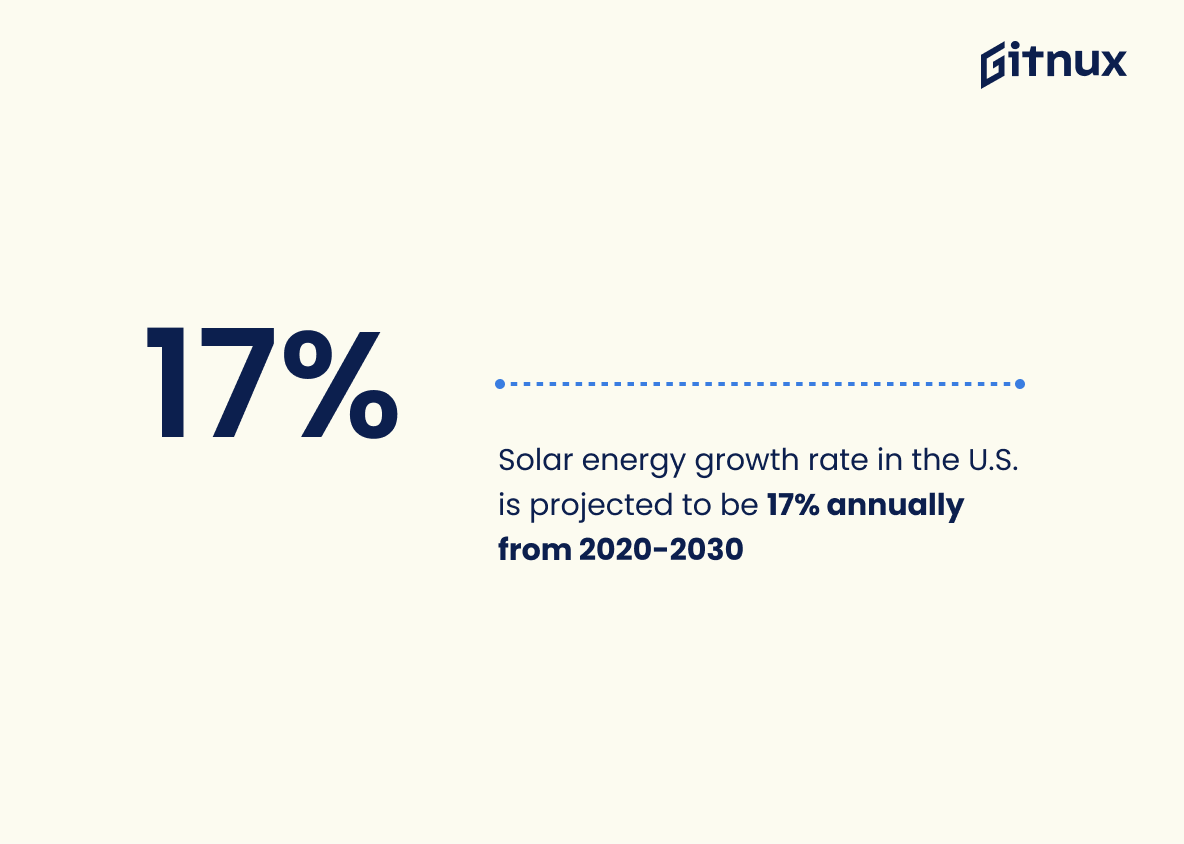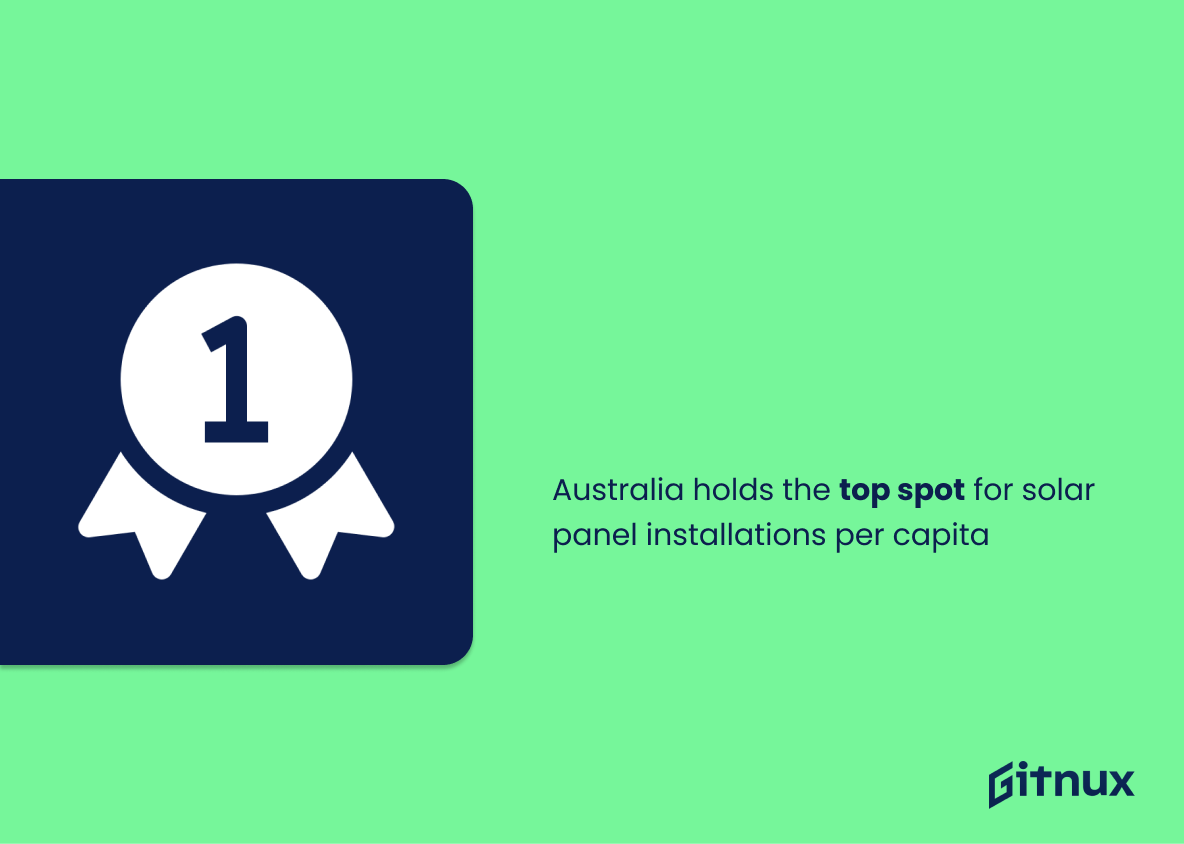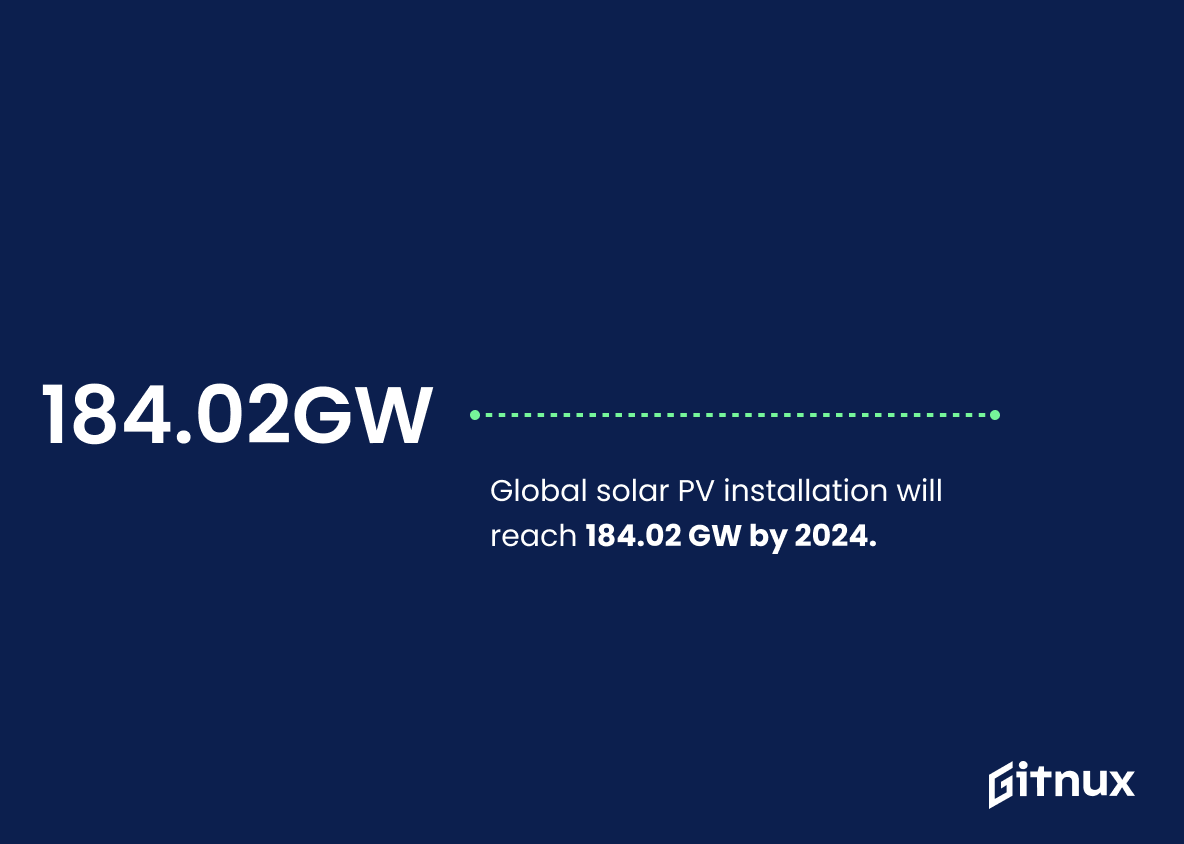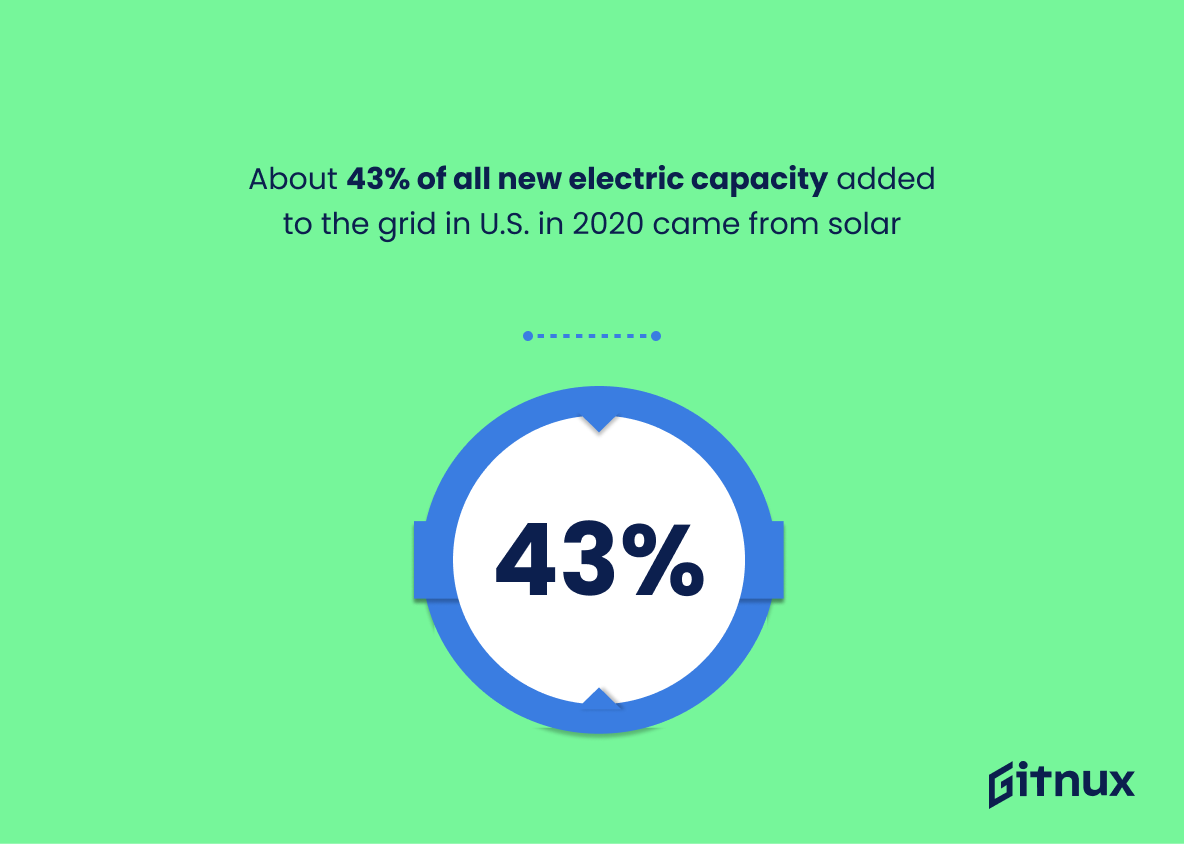As we shift towards a more sustainable future, the solar panel industry has emerged as a beacon of hope in the realm of renewable energy. Venture with us as we delve into the world of solar technology, unraveling the robust statistical landscape that underlies this rapidly expanding industry. Whether you’re a potential investor seeking to understand the market dynamics, an environmental enthusiast, or simply an individual contemplating a greener lifestyle, this comprehensive guide to the latest solar panel industry statistics holds valuable insights for everyone. Prepare to be enlightened, as we harness the power of the sun through illuminating data.
The Latest Solar Panel Industry Statistics Unveiled
The global solar panel market size was valued at USD 178.2 billion in 2020 (Source: Fortune Business Insight)
Inshining a light on the colossal valuation of the global solar panel market at USD 178.2 billion in 2020, this statistic casts a potent beam on the potential of the photovoltaic sector. It enriches our understanding of the solar panel industry’s surging significance, highlighting not only its vast monetary value but the undercurrent of higher demand and widespread acceptance it implies. Given this trajectory, it underscores the solar industry’s indisputable role as a forerunner in the transition to renewable energy. This numerical testament adds perspective to readers, allowing them to grasp the accelerating growth and global reliance on this green technology. The significance isn’t merely monetary – this figure paints a future where sustainable energy shines brighter than ever.
From 2012 to 2019, solar installations grew by an average of 48% each year (Source: SEIA)
In the dynamic landscape of the Solar Panel Industry, an intriguing trend has surfaced, carving an illuminating path to the future. The rays of growth in solar installations between 2012 and 2019, exhibited an impressive yearly average growth rate of 48% according to SEIA. This not only attests to the burgeoning popularity and acceptance of solar energy, it also showcases the transformative shift towards sustainable solutions within the energy space. Furthermore, this potent surge in installations outlines the burgeoning profitability and economic viability of the solar panel industry, making it an undeniable force to be reckoned with. This growth trajectory, is akin to a beacon of light guiding the global community towards a greener, more sustainable future.
In 2020, solar power provided about 3.3% of total U.S. electricity generation (Source: EIA)
Illuminating the increasing role of solar power in the United States, we can draw attention to the fact that it accounted for 3.3% of the total U.S. electricity generation in 2020, according to the EIA. This number shines a light on the burgeoning influence of the solar panel industry and underlines its growing contribution to the American energy grid. As we bask in more information about the solar panel industry, this statistic serves as a beacon of progression, encouraging investors, innovators, and consumers alike to continue their quest for clean, renewable energy.
As of 2021, China retains its top spot as the largest producer of photovoltaic power, reaching over 252 GW of capacity (Source: Statista)
Highlighting China’s prominent role as the unrivaled leader in photovoltaic power production serves as an impactful illustration of the scale at which renewable energy options are being pursued across the globe. This robust 252 GW capacity not only helps underline China’s commitment to sustainable energy evolution but also provides a significant benchmark for gauging developments in the solar panel industry worldwide. When decoding the dynamics of the solar panel industry, observing China’s advancements offers valuable insights for market directions, innovation trends and the overall growth trajectory of this renewable energy sector. Thus, this powerful statistic substantiates China’s pivotal position in driving global conversations about sustainable energy production, propelling the photovoltaic revolution, and marking new horizons within the solar panel industry.
The Accumulative Global Installed PV capacity is expected to reach up to 1600GW-3200GW by 2030 (Source: Solar Power Europe)
Projecting the Accumulative Global Installed PV capacity to potentially reach 1600GW-3200GW by 2030 puts a spotlight on the escalating global momentum towards solar power. This eye-opening statistic casts a gleaming ray of optimism on the solar industry, underscoring its pronounced growth potential over the coming decade. The figures aren’t just impressive – they’re a powerful testament to the rapid strides our world is making in embracing cleaner, greener energy sources. Framed within the context of a blog post about Solar Panel Industry Statistics, this prediction helps crystalize the trajectory of the sector, highlighting the vast swathes of untapped opportunities ripe for exploration and capitalisation.
World’s top solar equipment exporter – China with a 41% share of all solar equipment sent abroad in 2020 (Source: Atlas)
In painting a vivid picture of the global solar panel industry, it’s crucial to highlight China’s dominating presence as the premier solar equipment exporter. The nation’s commanding 41% share of all solar equipment exported in 2020 is a distinct testament to its industry-heft and instrumental role in shaping the trajectory of the solar market worldwide. With such a weighty contribution, China’s production strategies, technologies, and even governmental policies inherently influence the ebbs and flows of the global solar panel landscape. It, therefore, puts into perspective its pivotal role and why its moves within this sector should be closely watched by stakeholders.
The cost of solar has decreased by 81% since 2010 (Source: Lazard)
Witnessing an impressive 81% drop in the cost of solar since 2010 illuminates a revolutionary transformation in the solar panel industry. This dramatic downswing isn’t merely a number—it signifies a substantial progress towards making solar energy not just an environmentally conscious choice, but also a financially viable one for an increasing number of people and businesses.
Such a significant cost reduction removes previous barriers to entry, making solar power accessible to the masses, rather than being an exclusive choice for the environmentally dedicated or financially able. The implications of this economic shift are profound, paving the way for a surge in solar installations, higher competitive stakes for non-renewable energy sources, and myriad market opportunities in the evolving solar industry.
Further down the line, this cost trend may contribute to a drastic reconstruction of our energy landscape. As cost barriers continue to diminish and solar power’s economic appeal strengthens, our roads to a sustainable future may harness a visibly brighter sun path. So, in the grand theater of solar panel industry statistics, this 81% cost slash plays a dramatic lead role—it stages a dramatic scene of affordability, accessibility, and a renewable energy choice for all.
Solar energy growth rate in the U.S. is projected to be 17% annually from 2020-2030 (Source: EIA)
In the realm of Solar Panel Industry statistics, the projected 17% annual growth rate of solar energy in the U.S. from 2020-2030 hits with the force of a radiating sunbeam. Not only does this figure spotlight an anticipated ascendance, it also reflects an increasingly favorable market environment for businesses and investors in the solar panel industry. Anticipating a steady climb in growth, manufacturers may be encouraged to amplify production, instigating innovation while lowering costs. For instance, advances in photovoltaic technology, spurred on by this predicted increase, could make solar panels more efficient and affordable for consumers. Ultimately, this statistic could signify a bright future for the solar panel industry in the next decade.
More than 200,000 Americans work in solar as of 2021 (Source: SEIA)
Demonstrating the robust vitality of the solar industry, over 200,000 Americans embraced solar-related careers by 2021, as per the SEIA findings. This illuminating data point underscores a significant contribution to the U.S. economy, fostering employment opportunities across the nation. Furthermore, this surge of interest towards solar panel industry jobs reinforces the sustainable potential of this sector, a beacon of innovation, resilience, and eco-friendly growth. This crescendo makes it apparent that the solar panel industry isn’t merely illuminating homes; it’s lighting the path for future careers and economic vitality.
By the end of 2021, America had more than 97.2 GW of solar capacity installed (Source: SEIA)
Drawing upon the illuminating fact that America had an impressive 97.2 GW of solar capacity installed by the end of 2021, it becomes clear that America is solarizing its energy framework at an unprecedented scale. This pivotal figure, being a testament to the proliferating maturity of the solar panel industry, enriches our understanding of the exponential growth in the field. Against the backdrop of a mounting global emphasis on green and renewable resources, this statistic serves as a powerful reminder of the accelerating pace at which solar power is becoming a mainstream energy source. Imprinted in this figure is America’s statement of belief and commitment to sustainable energy, an aspect paramount to the discourse found within a blog post about solar panel industry statistics.
Australia holds the top spot for solar panel installations per capita (Source: RenewEconomy)
Enlightening the global arena with its sustainable efforts, Australia’s crowning feat of leading the world in per capita solar panel installations injects a powerful narrative into our blog post about Solar Panel Industry statistics. This high-impact data not only showcases Australia’s undeniable commitment to promoting green technology but also sets a formidable benchmark for other nations, sparking a competitive edge in the global solar panel industry. In an era striving towards clean energy, this statistic vividly demonstrates the prospects and potential of reshaping energy consumption patterns, consequently paving the way for a more environment-friendly future.
By 2023, India plans to achieve 40 GW of solar capacity through rooftop solar installations (Source: MNRE)
Presenting a promising peek into the future, the forecast regarding India’s ambitious target to reach 40GW of solar capacity via rooftop solar installations by 2023 is an indication of sizable growth in the global solar panel industry. India’s intent not only signals a significant effort towards sustainable transitions in power, but also forecasts a burgeoning market for solar panel manufacturers, installers, and innovators. This data, sprucing up from credible source MNRE, illuminates the vibrant opportunities, market expansion, and technological advancements that lie on the horizon for stakeholders in the solar energy sphere. Moreover, it underscores the potential escalation in worldwide efforts to reduce carbon emissions, pushing forward the green energy revolution.
global solar PV installation will reach 184.02 GW by 2024 (Source: GlobalData”)
The illuminating projection of global solar PV installation surging to 184.02 GW by 2024 plays a consequential role in enlightening readers on the splendid future of the solar panel industry. Unveiling this majestic growth trajectory paints a picture of an industry standing at the precipice of an exciting expansion, fired by global shifts towards renewable energy. Source: GlobalData, therefore, hands us a powerful lens to perceive an elevated importance of solar panels in the quest for greener tomorrow; as well as an undeniable certitude of a flourishing market opening numerous investment opportunities.
By 2050, solar power could be the world’s largest source of electricity, generating 33% of the total (Source: IEA)
Taking a glance at our radiant future, an assertion by the International Energy Agency (IEA) paints a dazzlingly bright picture. They predict that by 2050, a third of the world’s electricity might be processed from the abundant rays of our Sun. This vision holds electrifying potential for the solar panel industry.
Imagine this, solar power not just making a substantial share, but fully dominating the energy stage as the largest electricity provider. Crafting such an extraordinary narrative would mean a celestial ascendance for solar technology, its investors, manufacturers, and adoptors.
Such an uptick in prominence and reliance would certainly fuel demand for skilled professionals, technological innovations, efficient manufacturing, and expansive solar infrastructures. In short, for those in the business of photon-to-power transformation, the future prospects shine as brightly as our life-giving star.
This projection is an alluring compass for our strategy planners, pointing towards a future where solar reigns supreme. A future where the Solar Panel Industry is, quite literally, an industry of paramount global importance.
About 43% of all new electric capacity added to the grid in U.S. in 2020 came from solar (Source: SEIA)
Highlighting that nearly half of all new electric capacity in the U.S. in 2020 originated from solar energy paints an optimistic future for the solar panel industry. It signifies a significant transition towards renewable energy sources, positioning solar power as a leader in this new age of sustainable power generation. This headway is indicative of the solar panel industry’s potential growth, stirring interested investors and encouraging more consumers to consider solar energy. The shift not only impacts the economy but also the environment, demonstrating solar power’s role in addressing climate change and reducing carbon footprints.
The average payback period for a residential solar panel system in the U.S. is around 8 years (Source: EnergySage)
Illuminating the viability of residential solar panel systems, the eight-year average payback period in the U.S. showcases a compelling monetary argument for their installation. With this metric in hand, readers of a solar industry-oriented blog can gauge both the fiscal and environmental return on solar panel investments. It not only spotlights a relative short-term recovery prospect for monetary outlay but it also reiterates the potential for a decade or more of cost-saving energy efficiency after the payback period. This information encourages both consumer adoption and industry investment, serving as a beacon towards a sunlit pathway for sustainable energy usage.
The world’s largest solar power plant is in India, the Bhadla industrial solar park, which spans over 14,000 acres (Source: National Geographic)
Illuminating the sheer magnitude of Bhadla Industrial Solar Park in India offers the readers a mind-opening vista into the limitless potential of solar energy. With a sprawling footprint over 14,000 acres, it draws a clear and bold line under the fact that solar energy isn’t just a novel idea – it’s a practical, resourceful, and widely-adopted power generation method. From this vantage point, one can truly appreciate the solar industry’s expansive growth and its bright path leading to the future of renewable power sources. This is the world we see through the lens of Solar Panel Industry Statistics, shedding light on the global shift towards eco-friendly, sustainable power generation.
By 2024, it is projected that there will be over 40,000 solar jobs in the UK (Source: GOV UK)
Forecasting a thriving solar job market in the UK by 2024, this statistic signifies a promising herald for the solar panel industry. Expanding job opportunities reflect the industry’s robust growth, a testament to the increasing adoption of clean, renewable energy solutions. In the context of a blog post about Solar Panel Industry Statistics, this projection underscores the sector’s potential, triggering a sustainable economic ripple effect alongside environment conservation. It presents a narrative of an industry that not only brightens households and businesses but also the career prospects of thousands, thus shaping the face of green employment.
In Germany, solar power capacity per capita is 645 watts – highest in the world (Source: DW)
Highlighting Germany’s incredible accomplishment of having the world’s highest solar power capacity per capita— a staggering 645 watts— serves a twofold purpose in a blog post about Solar Panel Industry Statistics. Firstly, it exemplifies an effective utilization of renewable energy, illustrating the potential and feasibility of solar power on a national scale. More crucially, as we dissect this statistic in the global sphere, it subtly underscores the competitive landscape and growth trajectory of the solar power industry. It invites comparison, triggering curiosities about the technologies, policies, or societal factors that give Germany the edge in solar power capacity. On a larger scale, it could even pave the way for countries worldwide to reassess their renewable energy strategies in a race towards a greener, more sustainable future.
The floating solar panel market is projected to reach $2.70 billion by 2025, grow at a CAGR of 30.1% (Source: MarketsandMarkets)
Unfolding the figures mentioned, it adroitly divulges the vigorous progress and robust potential of the floating solar panel industry. Valued at an impressive $2.70 billion by 2025, it’s forecasted to ascend at a compelling CAGR of 30.1%. Manifesting a resounding statement in the realm of solar panel industry statistics, this prediction illustrates a dynamic shift towards water-based photovoltaic systems. It propels readers and stakeholders to envisage a buoyant future where harnessing sunlight no longer remains confined to the terrains, expanding impressively over water bodies. The projection remarkably illuminates the evolving dynamics in the solar energy landscape, becoming a beacon of insights for enthusiasts, investors, and innovators alike.
Conclusion
In a nutshell, the current statistics of the solar panel industry are telling a promising story of a booming sector poised to command even more relevance in the years to come. With rising awareness about environmental sustainability, technological advances, and supportive government policies, we foresee an even more robust growth trajectory for the solar panel industry. As clean energy becomes not just an option but a necessity, it’s clear that solar power will be at the forefront of this green revolution. Stay tuned to this space for the latest industry insights and to remain at the cutting edge of this exciting sector.
References
0. – https://www.www.statista.com
1. – https://www.www.power-technology.com
2. – https://www.www.iea.org
3. – https://www.www.energysage.com
4. – https://www.www.solarpowereurope.org
5. – https://www.www.gov.uk
6. – https://www.www.marketsandmarkets.com
7. – https://www.mnre.gov.in
8. – https://www.www.eia.gov
9. – https://www.www.dw.com
10. – https://www.www.fortunebusinessinsights.com
11. – https://www.www.seia.org
12. – https://www.reneweconomy.com.au
13. – https://www.www.lazard.com
14. – https://www.atlas.cid.harvard.edu
15. – https://www.www.nationalgeographic.com
